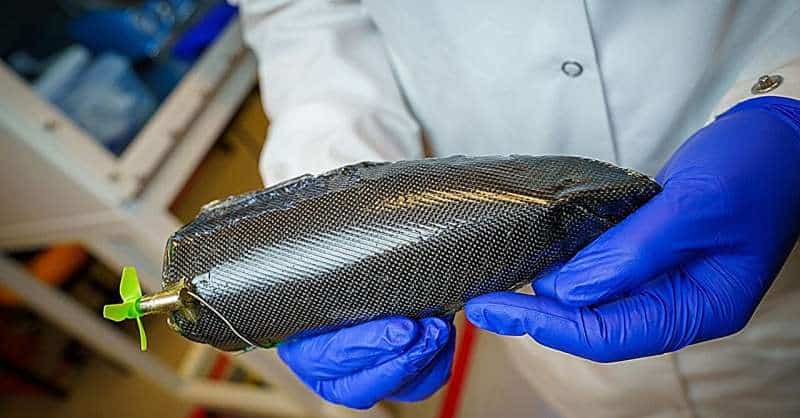
Picture a smartphone clad in a casing that’s not just for protection but also doubles as a reservoir of electricity, or an electric car where the doors and floorboard store energy to propel it forward. Such technologies may one day be a reality, thanks to recent work by engineers at the University of California San Diego.
The researchers have developed what’s called a structural supercapacitor—a device that provides both structural support and energy storage capabilities. Such a device could add more power to electronic gadgets and vehicles without adding extra weight, allowing them to last longer on a single charge.
While the concept of structural supercapacitors is not entirely new, it has been a longstanding challenge to create a single device that excels at both bearing mechanical loads and storing electrical energy efficiently. Traditional supercapacitors are great at energy storage but lack the mechanical strength to serve as structural components. On the flip side, structural materials can provide support but fall short when it comes to energy storage.
Now, a team led by Tse Nga (Tina) Ng in collaboration with Xinyu Zhang, both professors of electrical and computer engineering at UC San Diego, has achieved the best of both worlds in a new structural supercapacitor, reported recently in Science Advances.
As a proof of concept, the researchers used their structural supercapacitor to build a miniature solar-powered boat. The supercapacitor was molded to form the boat’s hull and then fitted with a small motor and circuit. The circuit was connected to a solar cell. When exposed to sunlight, the solar cell charges the supercapacitor, which in turn powers the boat’s motor. In tests, the boat was able to cruise across the water, demonstrating the efficacy of this innovative energy storage solution.
The device consists of the standard supercapacitor components: a pair of electrode surfaces separated by an electrolyte, which facilitates the flow of ions between the electrodes. What sets this device apart is the combination of materials selected to boost both mechanical strength and electrochemical performance.
The electrodes are made from carbon fibers woven into a fabric. This carbon fiber fabric itself provides substantial structural strength. Moreover, it is coated with a special mixture composed of a conductive polymer and reduced graphene oxide, which significantly enhances ion flow and energy storage capacity.
The solid electrolyte, another critical component, is a blend of epoxy resin and a conductive polymer called polyethylene oxide. The epoxy resin offers structural support, while the incorporation of polyethylene oxide fosters ion mobility by creating a network of pores throughout the electrolyte.
A key design feature here is that the concentration of polyethylene oxide varies across the electrolyte, creating what are known as concentration gradients. Areas adjacent to the electrodes feature a higher concentration of polyethylene oxide. This configuration helps ions flow faster and more freely at the electrode-electrolyte interface, boosting electrochemical performance.
However, a higher polyethylene oxide concentration results in more pores, weakening the material. To strike a balance, the central region of the electrolyte is made with a lower polyethylene oxide concentration, ensuring it can provide structural support while maintaining an efficient flow of ions.
“This gradient configuration is the trick to achieving optimal performance in the electrolyte,” said Ng. “Instead of using a single electrolyte configuration, we structured it so that the edges that contact the electrodes have higher electrical performance while the middle is mechanically stronger.”
While this represents a significant advancement toward structural energy storage, the researchers note that there is still much work to be done. Supercapacitors in general have high power density, meaning they can deliver big bursts of energy quickly, but they typically have lower energy density compared to batteries.
“Our future work will focus on increasing the energy density of our supercapacitor and making it comparable to some battery packs,” said study first author Lulu Yao, a materials science and engineering Ph.D. student in Ng’s lab. “The ultimate goal would be to achieve both higher energy density and power density.”























